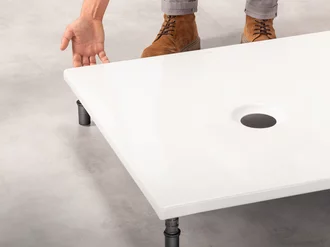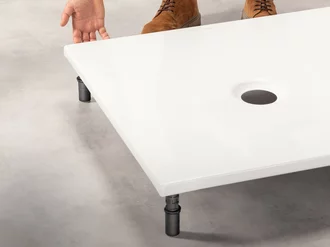
Product and planning details
Please use the filter to narrow down the downloads that are relevant to you.
BIM
BIM (Building Information Modelling) provides new solutions for the planning and realisation of construction projects and the operation of buildings. BIM offers the possibility to digitally control and manage projects across all involved trades and the entire life cycle of a building. Cooperation between specialist planners, project managers, investors and other participants is optimised, and the overall process becomes leaner and more transparent. We offer our BIM data in Revit (RVT) and Industry Foundation Classes (IFC) format.
The principle of Revit is to support both 2D and 3D modelling of a component-oriented building model. If a change is made in the planning process, it is automatically carried out in the entire project so that designs and documentation always remain consistent, up-to-date and complete. In the Revit model, size variants are stored in one model.
IFC format is an open system for plan output and can be used by Building Information Modelling (BIM) programs. It contains only one model size and cannot automatically update changes to the file. IFC is supported by numerous software programs for the exchange of building and model data.
CAD
CAD (computer aided design) means computer-aided design. Computer aided design can be done using 2D (2-dimensional) or 3D (3-dimensional) programs.
2D shows different views of an object. However, these cannot be easily combined or processed into new views. With 3D, the object is visualised in a three-dimensional view. This also allows individual parts to be viewed from different perspectives. To ensure data exchange (standardisation), common exchange formats are used.
In 2D, for example, these are dwg or dxf. In 3D, there are the exchange formats Step, Iges, 3D DXF (wireframe model), 2D DWG (wireframe model) and many more.
Iges and Step are formats for importing and exporting solids (volumes), surfaces and curves. These are the common formats in construction.
STEP (Standard for the Exchange of Product model data) is a standard for describing product data. There are also different formats for saving. We use the format AP 214. The generally accepted file extension for STEP files is .stp.
IGES (Initial Graphics Exchange Specification) is a common exchange format between CAD programs. The generally accepted file extension for IGES files is .igs.












